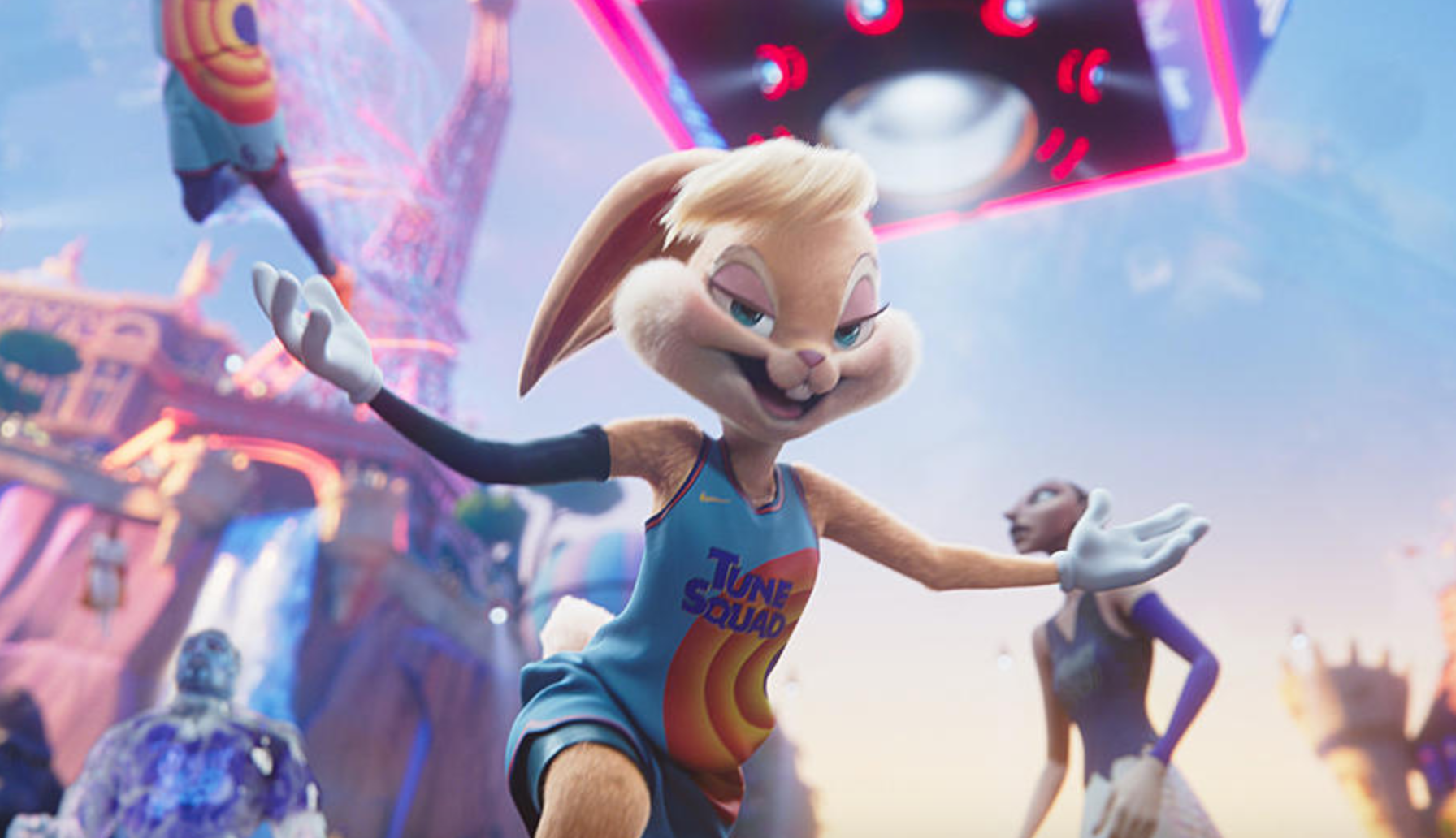Why is 'Space Jam's Lola Bunny so controversial?
There's a lot of false anger over the character redesign for Lola Bunny in Space Jam: A new Legacy, but the issues run far deeper than the surface.

The announcement of Space Jam: A New Legacy has inspired a surprising amount of online fervor. Its predecessor, starring Michael Jordan, was a commercial hit that remains pure nostalgia bait for many '90s kids, and the notion of a follow-up starring another beloved basketball star, LeBron James, sparked much excitement. The movie will also be the first theatrically released title to feature the iconic Looney Tunes characters since 2003's Looney Tunes: Back in Action. Warner Bros. is throwing everything at the wall for this film, including a plethora of cameos from WarnerMedia-owned properties as varied as The Matrix, A Clockwork Orange, and The Exorcist. They have promised a lavish and kinetic family film that will harbor a new age for some of the most beloved characters in cartoon history.
And yet there are way too many people freaking out over the design of a female rabbit.
The first images of the film revealed a new, less sexualized design for Lola Bunny, a character who was first introduced to the Looney Tunes canon through Space Jam. Malcolm D. Lee, the director, told Entertainment Weekly that he felt it was "important to reflect the authenticity of strong, capable female characters" and that they "we reworked a lot of things, not only her look, like making sure she had an appropriate length on her shorts and was feminine without being objectified, but gave her a real voice. For us, it was, let's ground her athletic prowess, her leadership skills, and make her as full a character as the others."
That all seems pretty sensible and uncontroversial. A family film in 2021 can improve on its predecessor by not having one of its few female characters be reduced to fetish fuel. Who would be bothered by that? Well, this is the internet, and it turns out a lot of people had very strong feelings about the midriff and cleavage of a cartoon rabbit.
A lot of the anger was bad-faith nonsense over the evil feminist social justice warriors once again destroying good men’s childhoods, and it’s hardly worth paying attention to. The current cultural climate thrives on forced controversy and fuelling this notion that Hollywood is some sort of oversensitive brainwashing force trying to force politics into art. A lot of people cried foul over robbing a character of sexual traits, implying that to be sexy or liberated in that way is bad. That’s not a terrible argument but it feels like having it over a character made for kids who otherwise had no other defining characteristics is somewhat misguided.
Really, what the Lola Bunny noise has highlighted is the long and limited history of gender representation in children’s media. She is but one instance of a dense lineage of female characters who exist entirely to be clones of the male leads or stock love interests.
Lola is a distaff counterpart, meaning that she is a female character who exists almost exclusively as a gender-flipped version of a male character. In Space Jam, she's basically the lady Bugs Bunny who is sexy and not much else. She doesn't get much of a personality beyond that in the movie. Characters like this are rampant throughout Western animation. Consider how Minnie Mouse is just Mickey with a bow and higher pitched voice. Look at Daisy Duck or Winnie Woodpecker. Alvin and the Chipmunks have the Chipettes. She-Ra was created to be a version of He-Man that appealed to girls. Muppet Babies gave Scooter a female version called Skeeter. And, of course, there is Smurfette, the only female Smurf whose entire character can be summed up as "woman." Pop culture loves itself a token woman in a group of dudes whose only job is to be the girl, and usually a love interest. Sometimes, they barely even give her a redesign beyond slapping some lipstick and a pretty bow on her head (hello, Ms. Pac-Man.)
The latest updates, reviews and unmissable series to watch and more!
Lola Bunny isn’t just the token lady, a female Bugs who he can get together with in the end: she’s “sexy.” Many a woman can regale their friends with tales of how their toys, their cartoons, and all the things sold to them as kids positioned women almost exclusively as objects of beauty. The costumes were always skimpy or eye-burningly pink. Every warrior woman has boob contoured armor that’s both impractical and sexualized (and historically inaccurate!) Even the animals aren't safe. Consider how many cartoons you watched growing up where the female bird or mink or even alien had heaving cleavage, just in case we forgot their gender. In that context, scenes in Space Jam where the camera moves up and down Lola’s legs and bare midriff like a bug-eyed wolf from a Tex Avery cartoon feel dishearteningly inevitable.
Discussions over issues like this end up being hijacked with whataboutism arguments over sexuality being bad, which feels like missing the forest for the trees. The issue isn’t about whether a female character can or cannot express some sort of sensuality. The problem is that it feels like that was all we got for decades. We get one female character and she’s there to be gawked at by the male ensemble. You get Smurfette and that’s it, and because she’s the only woman, she only gets to be defined as such. The boys get cool costumes and jokes and conflicts, and the girl gets a tank top and wolf whistles.
Things are improving. Steven Universe has an array of striking, deftly layered female characters of varying shapes and forms. The Netflix reboot of She-Ra faced the same inane forced anger over her redesign, which prized strength and comfort over fan-service, and ended up expanding her story into a beautiful, queer-friendly story of empathy in the face of seeming doom. Even Lola Bunny’s been through her fair share of reinventions on TV. On The Looney Tunes Show, as voiced by Kristen Wiig, she was a scattershot toon with an obsessive streak who got to be just as weird and over-the-top as the guys. She’s a character, not a sexy lamp, and surely that can only be seen as a positive step forward for pop culture.
Lola Bunny will now be voiced by Emmy winner Zendaya, and Space Jam: A New Legacy will feature more than a tiny handful of female characters. Sonequa Martin-Green is playing LeBron James's wife while Harper Leigh Alexander will play his daughter. A number of Women's National Basketball Association players will cameo too. It’s always a good thing when the female character isn’t a one-off feature of a male ensemble’s story, whether it’s a cartoon or major award-winning TV series.
Kayleigh is a pop culture writer and critic based in Dundee, Scotland. Her work can be found on Pajiba, IGN, Uproxx, RogerEbert.com, SlashFilm, and WhatToWatch, among other places. She's also the creator of the newsletter The Gossip Reading Club.


